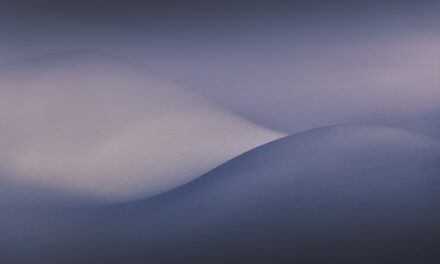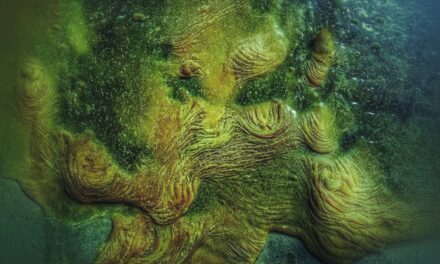Wolf Huber was born in 1485 in the small town of Passau, located in what is now Germany. His early life was steeped in the rich cultural milieu of the late Gothic period, a time when the transition to the Renaissance was beginning to take shape. Huber’s family background is somewhat obscure, but it is believed that he was the son of a painter, which likely provided him with an early exposure to the world of art.
This familial connection to the craft may have ignited his passion for painting and set him on a path that would see him become a significant figure in the art world. As a young man, Huber would have witnessed the profound changes sweeping through Europe during the late 15th and early 16th centuries. The rise of humanism, coupled with advancements in artistic techniques and a renewed interest in classical antiquity, created an environment ripe for innovation.
Huber’s formative years were marked by these transformative influences, which would later manifest in his own artistic style. His upbringing in Passau, a city known for its vibrant artistic community, undoubtedly played a crucial role in shaping his artistic sensibilities and aspirations.
Summary
- Wolf Huber was born in Austria in the early 16th century and grew up in a family of artists, which greatly influenced his artistic development.
- Huber was trained in the workshop of the renowned German painter Albrecht Dürer, where he was exposed to the techniques and styles of the Northern Renaissance.
- Huber’s style was characterized by a combination of German and Italian influences, with a focus on religious and mythological subjects and a mastery of perspective and composition.
- Notable works by Huber include “The Adoration of the Magi” and “The Crucifixion,” which showcased his skill in depicting emotional and dramatic scenes.
- Huber’s impact on the Renaissance art movement was significant, as he contributed to the spread of Renaissance ideals and techniques throughout Central Europe.
Artistic Influences and Training
Huber’s artistic journey began in earnest when he moved to Vienna, where he became acquainted with the burgeoning Renaissance movement. It is widely believed that he trained under the tutelage of prominent artists of the time, including the renowned painter Hans von Aachen. This exposure to established masters allowed Huber to hone his skills and develop a keen understanding of various artistic techniques.
The influence of his mentors is evident in his early works, which exhibit a blend of Northern European Gothic elements and emerging Renaissance ideals. In addition to formal training, Huber was deeply influenced by the works of contemporary artists such as Albrecht Dürer and Lucas Cranach the Elder. Dürer’s meticulous attention to detail and innovative use of perspective left an indelible mark on Huber’s approach to composition.
Meanwhile, Cranach’s vibrant colour palette and expressive figures inspired Huber to explore new ways of depicting human emotion and experience. This confluence of influences helped Huber carve out a unique artistic identity that would set him apart from his contemporaries.
Style and Techniques of Wolf Huber
Wolf Huber’s style is characterised by a harmonious blend of realism and idealism, reflecting the dual influences of Northern European art and Italian Renaissance principles. His works often feature meticulously rendered details, particularly in the depiction of fabrics and textures, which showcase his technical prowess. Huber employed oil paints to achieve a luminosity that brought his subjects to life, allowing for a depth of colour that was both striking and evocative.
One of Huber’s notable techniques was his use of chiaroscuro, the contrast between light and shadow, which added a three-dimensional quality to his figures. This technique not only enhanced the realism of his compositions but also imbued them with a sense of drama and emotional depth. Furthermore, Huber’s innovative approach to perspective allowed him to create dynamic spatial relationships within his works, drawing viewers into the narrative he sought to convey.
His ability to balance these elements with grace and precision is a testament to his mastery as an artist.
Notable Works and Contributions to Art
Among Wolf Huber’s most celebrated works is “The Adoration of the Magi,” a stunning altarpiece that exemplifies his skill in composition and narrative storytelling. In this piece, Huber masterfully captures the moment of reverence as the Magi present their gifts to the Christ child. The intricate details of the figures’ garments, combined with the rich colour palette, create a sense of warmth and intimacy that invites viewers into the sacred scene.
This work not only showcases Huber’s technical abilities but also reflects his deep understanding of religious themes prevalent during the Renaissance. Another significant contribution by Huber is his series of portraits, which reveal his keen insight into human character and emotion. His portrait of “A Young Woman” stands out for its psychological depth; the subject’s gaze seems to engage directly with the viewer, creating an intimate connection that transcends time.
Through these portraits, Huber not only captured likenesses but also conveyed the inner lives of his subjects, marking a shift towards more personal representations in portraiture during this period.
Wolf Huber’s Impact on the Renaissance Art Movement
Wolf Huber’s contributions to the Renaissance art movement were profound, as he bridged the gap between Northern European traditions and the emerging Italian styles. His ability to synthesise these influences allowed him to create works that resonated with both local audiences and those further afield.
Moreover, Huber’s innovative techniques inspired a generation of artists who followed in his footsteps. His emphasis on realism and attention to detail set new standards for portraiture and religious painting, encouraging others to explore similar themes in their work. As such, Huber can be seen as a catalyst for change within the art world, helping to usher in a new era characterised by greater emotional depth and technical sophistication.
Recognition and Legacy of Wolf Huber
Despite his significant contributions to art, Wolf Huber’s legacy has often been overshadowed by more prominent figures of the Renaissance. However, art historians have increasingly recognised his importance in recent years, acknowledging him as a key player in the development of Northern Renaissance painting. His works are now celebrated for their technical excellence and emotional resonance, earning him a place among the great masters of his time.
Huber’s legacy is also preserved through various exhibitions that showcase his art alongside that of his contemporaries. These exhibitions not only highlight his individual achievements but also contextualise his work within the broader narrative of Renaissance art. As scholars continue to study and analyse Huber’s contributions, it is clear that his influence extends far beyond his lifetime, leaving an indelible mark on the evolution of Western art.
Themes and Subjects in Wolf Huber’s Art
The themes present in Wolf Huber’s art are diverse yet interconnected, often reflecting the spiritual and humanistic concerns of his time. Religious subjects dominate much of his oeuvre, with depictions of biblical narratives serving as vehicles for exploring deeper moral and philosophical questions. In works such as “The Last Supper,” Huber captures not only the physicality of the figures but also their emotional states, inviting viewers to contemplate the significance of faith and sacrifice.
In addition to religious themes, Huber frequently explored human emotion and experience through portraiture. His ability to convey psychological depth through facial expressions and body language speaks to his understanding of human nature. This focus on individuality marked a departure from earlier artistic conventions that prioritised idealised forms over authentic representations.
By embracing these themes, Huber contributed to a broader cultural shift towards humanism that characterised the Renaissance.
Collaboration with Other Artists and Patrons
Throughout his career, Wolf Huber engaged in collaborations with other artists and patrons that enriched his artistic practice. His connections within Vienna’s artistic community allowed him to exchange ideas and techniques with fellow painters, fostering an environment of creativity and innovation. These collaborations often resulted in joint projects that showcased the talents of multiple artists while also elevating Huber’s profile within the art world.
Patronage played a crucial role in Huber’s career as well; he received commissions from influential figures who recognised his talent and sought to enhance their own status through art. These relationships not only provided financial support but also facilitated opportunities for experimentation and growth in Huber’s work. The interplay between collaboration and patronage underscores the interconnected nature of artistic production during this period.
Personal Life and Relationships
Wolf Huber’s personal life remains somewhat enigmatic due to limited historical records; however, it is known that he married Anna von Wels in 1515, with whom he had several children. This familial aspect likely influenced both his artistic output and personal philosophy, as many artists during this time drew inspiration from their domestic lives. The balance between personal responsibilities and artistic ambition is a theme that resonates throughout Huber’s work.
Additionally, Huber’s relationships with fellow artists and patrons were instrumental in shaping both his career trajectory and artistic development. The camaraderie shared among artists during this period fostered an environment conducive to innovation; friendships often led to collaborative projects or exchanges of ideas that enriched their respective practices. These connections highlight the importance of community within the art world during the Renaissance.
Preservation and Exhibition of Wolf Huber’s Art
The preservation of Wolf Huber’s works has been an ongoing endeavour for art historians and institutions alike. Many of his paintings are housed in prestigious museums across Europe, where they are carefully maintained for future generations to appreciate. The efforts made by conservators ensure that Huber’s intricate details and vibrant colours remain intact, allowing viewers to experience his artistry as it was intended.
Exhibitions dedicated to Huber’s work have become increasingly common as interest in his contributions grows. These exhibitions not only showcase individual pieces but also contextualise them within broader movements in art history. By bringing together works from various periods and styles, curators provide audiences with insights into how Huber’s innovations influenced subsequent generations of artists.
Contemporary Relevance and Continued Influence of Wolf Huber
In today’s art world, Wolf Huber’s relevance endures as contemporary artists continue to draw inspiration from his techniques and themes. His exploration of human emotion resonates with modern audiences who seek authenticity in artistic expression. Furthermore, Huber’s ability to blend realism with idealism serves as a reminder of the power art holds in conveying complex narratives about the human experience.
As scholars delve deeper into Huber’s oeuvre, new interpretations emerge that highlight his significance within both historical contexts and contemporary discussions about art. The ongoing study of his work ensures that Wolf Huber remains not only a figure from the past but also an enduring source of inspiration for future generations seeking to navigate their own artistic journeys amidst an ever-evolving landscape.
For those interested in exploring the emotional depth of art, a related article worth checking out is Emotive Abstraction: Channeling Feelings into Color and Form. This article delves into how artists use abstract forms and colours to convey their emotions and create powerful visual experiences. It provides a fascinating insight into the world of abstract art and how artists like Wolf Huber may have drawn inspiration from their own emotions to create their masterpieces.




